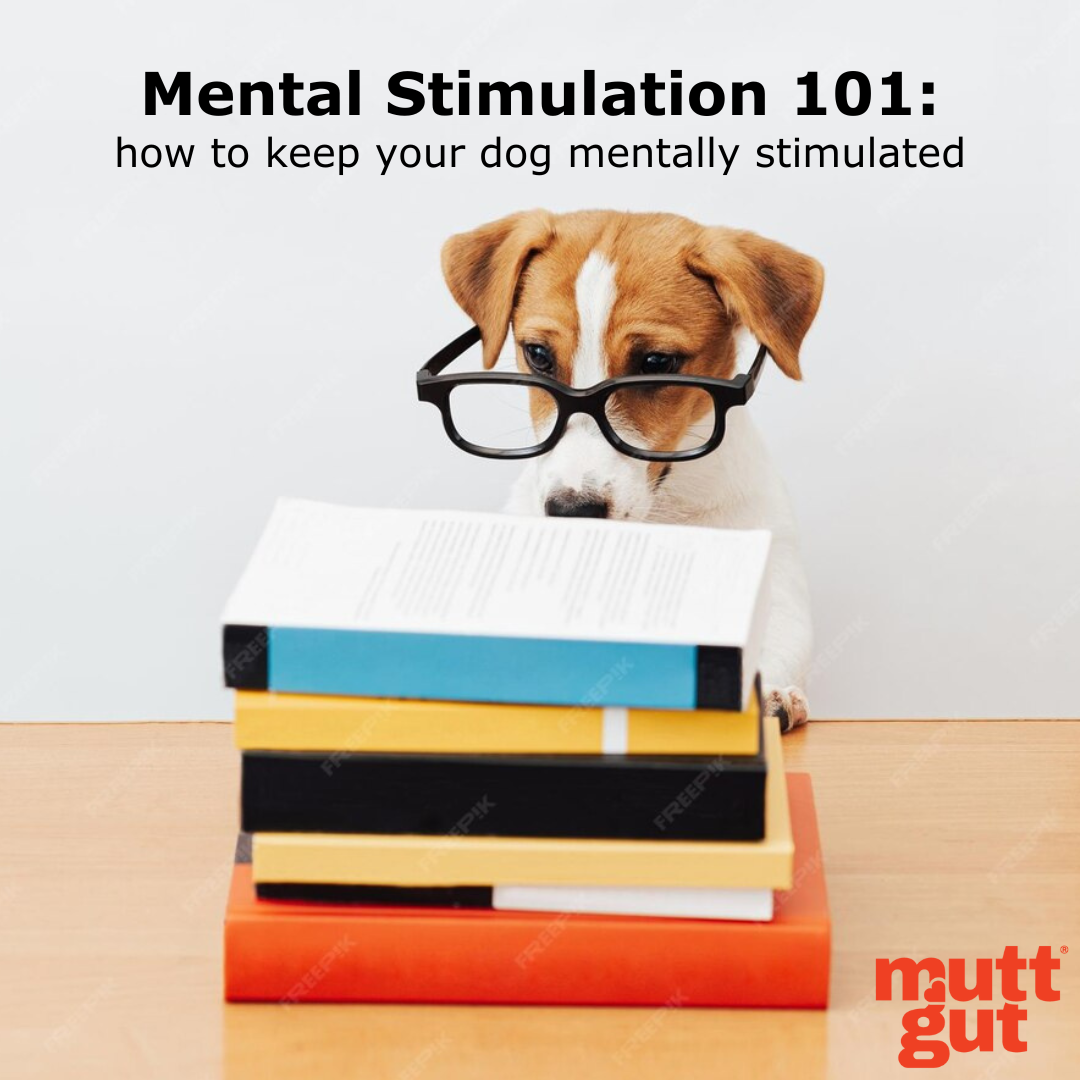
A Comprehensive Guide to Dog Mental Stimulation
Share
This guide dives into the often-overlooked aspect of dog care – mental stimulation. Beyond the basics, engaging your dog's mind is crucial for their overall well-being. Here, we explore various methods to stimulate your dog's cognitive abilities, understanding the benefits and practical applications.

Understanding Dog Intelligence
Dogs possess varied intelligence types: instinctive, adaptive, working, and social. Recognizing these forms guides tailoring activities to suit your dog's unique needs.
Understanding instinctive intelligence involves recognizing your dog's innate abilities and instincts. Breeds with a historical purpose often display high working intelligence. Adaptive intelligence involves problem-solving and learning from experiences, while social intelligence centers on communication.
Signs of a Mentally Stimulated Dog
Recognizing signs like curiosity, a calm demeanor, playfulness, improved problem-solving, and reduced destructive behavior indicates mental stimulation.
Curiosity is evident when your dog explores its surroundings and shows interest in new objects. A calm demeanor signals contentment, while heightened playfulness and enthusiasm during games indicate mental engagement. Improved problem-solving skills become apparent as your dog navigates challenges, and a reduction in destructive behavior signifies a satisfied, stimulated mind.

Interactive Toys and Games
Puzzle Toys:
Utilize puzzle toys like Kong or DIY versions to challenge your dog's problem-solving abilities.
Puzzle toys, such as the classic Kong, provide mental stimulation by requiring your dog to figure out how to extract treats or peanut butter. A DIY approach involves creating a puzzle feeder using a muffin tin and tennis balls, promoting mental engagement through play.
Fetch Variations:
Vary fetch games using different toys, shapes, and textures for mental stimulation.
Introduce variety to fetch by using toys of different shapes and textures. Playing fetch in confined spaces with obstacles adds an extra layer of mental engagement as your dog navigates challenges to retrieve the toy.
Tug-of-War with a Twist:
Modify tug-of-war to include rules and multi-handled toys for mental engagement.
Enhance tug-of-war by introducing rules that require your dog to release the toy on command. Multi-handled tug toys allow you to guide your dog through different movements, engaging them physically and mentally.
Training for Mental Agility
Training sessions enhance adaptive intelligence.
Basic commands and clicker training encourage cognitive development.
Basic Commands and Beyond:

Progress from basic to advanced commands, changing locations for added challenge.
Start with basic commands like sit, stay, and lie down. Progress to advanced tricks such as shake hands or roll over. Changing the location of training sessions adds variety, challenging your dog to focus in different environments and enhancing their adaptive intelligence.
Clicker Training:
Associate a click sound with a treat to reinforce positive behaviors and enhance problem-solving.
Clicker training, a positive reinforcement technique, pairs a distinct sound with a treat. This method enhances problem-solving abilities as your dog associates specific actions with positive outcomes.
Engaging Outdoor Activities
Outdoor activities, like scavenger hunts and nature walks, tap into sensory stimuli for mental engagement.
Scavenger Hunts:
Hide treats for indoor and outdoor scavenger hunts, stimulating the sense of smell.
Scavenger hunts engage your dog's sense of smell and problem-solving skills. Hiding treats indoors or in your backyard encourages your dog to use their nose to locate hidden treasures, providing mental stimulation and fulfilling their instinctive intelligence.
Nature Walks and Hikes:
Explore different trails and introduce a backpack for added physical and mental stimulation.
Nature walks and hikes provide a sensory-rich environment that captivates your dog's attention. Explore different trails to keep the experience novel and allow your dog to investigate interesting scents and textures. Introducing a backpack for your dog to carry adds a physical and mental workout to the adventure.
Canine Enrichment Through Food
Transform mealtime into a mental exercise with DIY treat dispensers and frozen treats.
DIY Treat Dispensers:
Create PVC pipe dispensers or puzzle feeders for mental and physical activity.
Transform mealtime into a mental exercise by creating DIY treat dispensers. For example, use a PVC pipe filled with kibble, drilled with holes, and capped on one end. As your dog rolls the pipe, treats dispense intermittently, encouraging mental and physical activity. Puzzle feeders and snuffle mats are other options that engage your dog's problem-solving skills.
Frozen Treats and Puzzles:
Freeze dog-friendly ingredients in toys like Kong for an engaging, cooling treat.
Introduce frozen treats as a delicious and mentally stimulating reward, especially during warmer months. Freeze a mixture of dog-friendly ingredients like yogurt, fruits, or broth in toys like Kong. This not only cools your dog down but also extends the duration of mental stimulation as they work to access the tasty interior.
Tech Toys and Apps
Explore interactive toys and apps designed for dogs, ensuring they complement rather than replace interactive experiences.
Incorporate technology into your dog's playtime with interactive toys and apps. These tools offer engaging experiences that stimulate both their mind and senses. Ensure tech toys complement the interactive and bonding experiences between you and your dog.
In conclusion, recognizing the importance of mental well-being for dogs is crucial. Experiment with activities, observe preferences, and foster an environment that encourages curiosity and problem-solving. A mentally stimulated dog is a happy companion, ready for life's adventures. Check out MuttGut or KittyGut here!